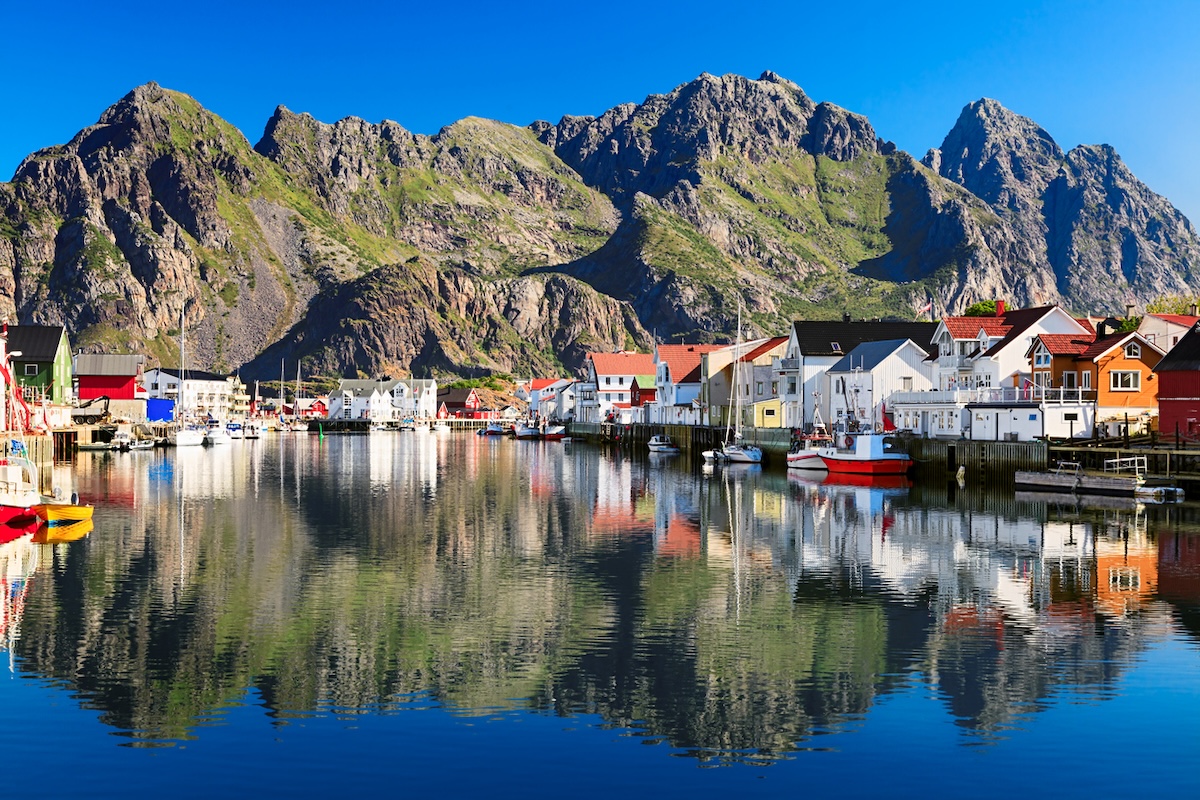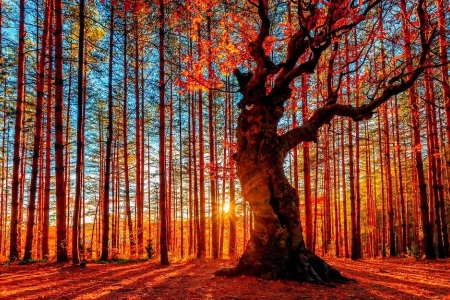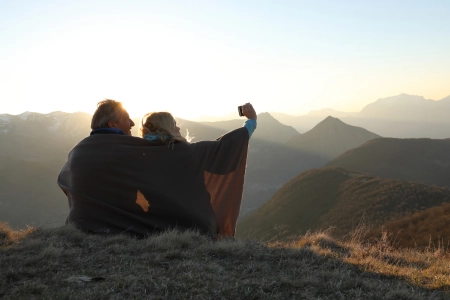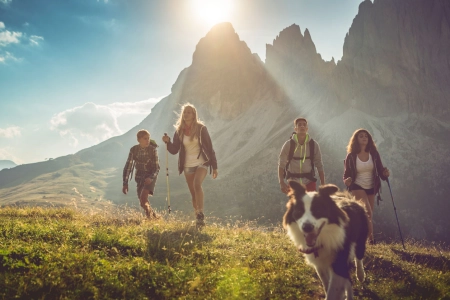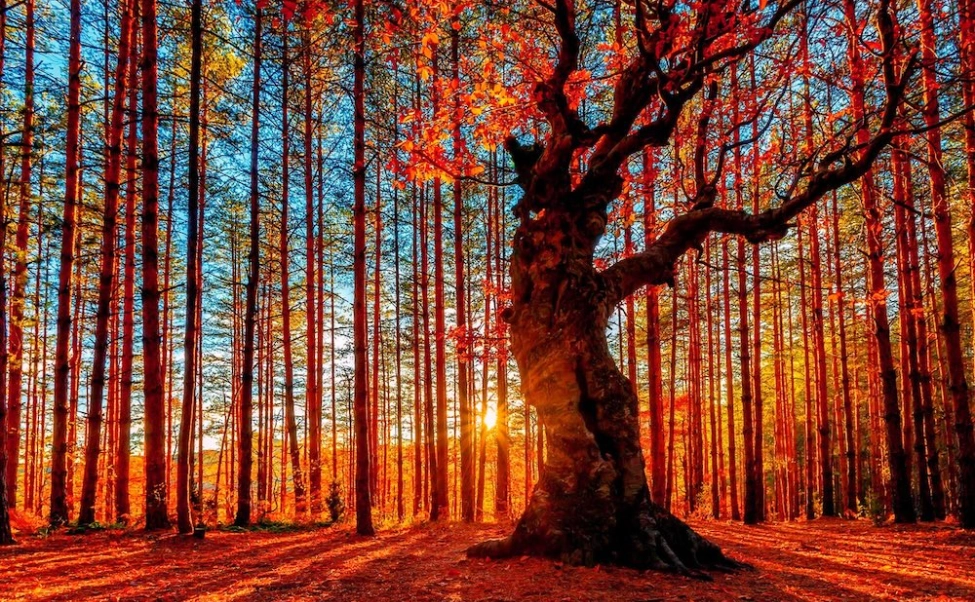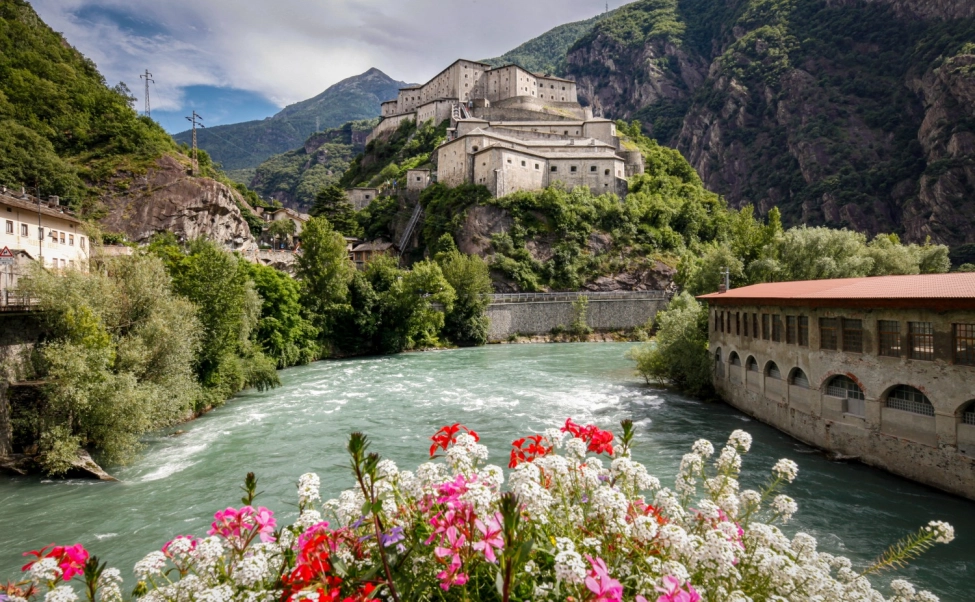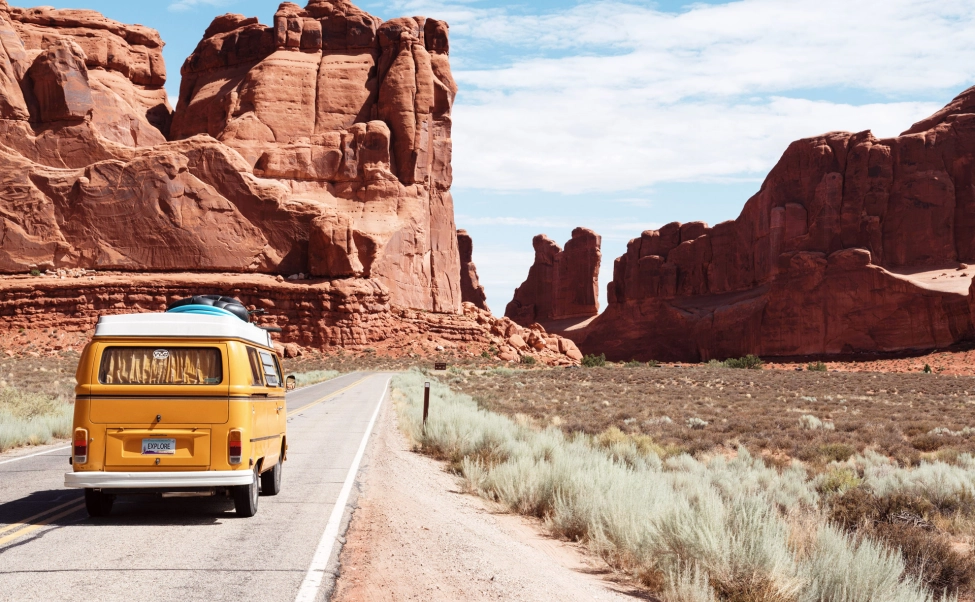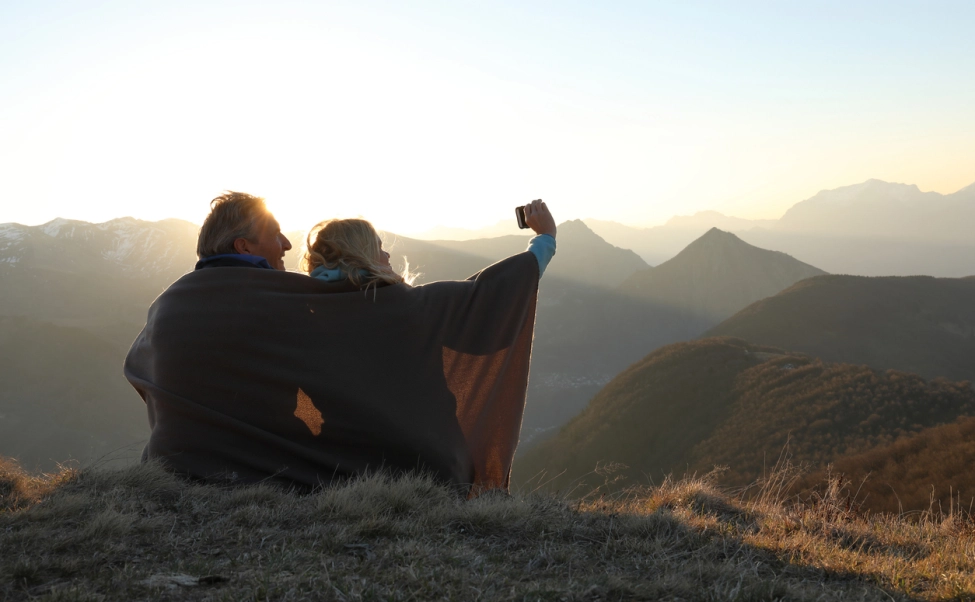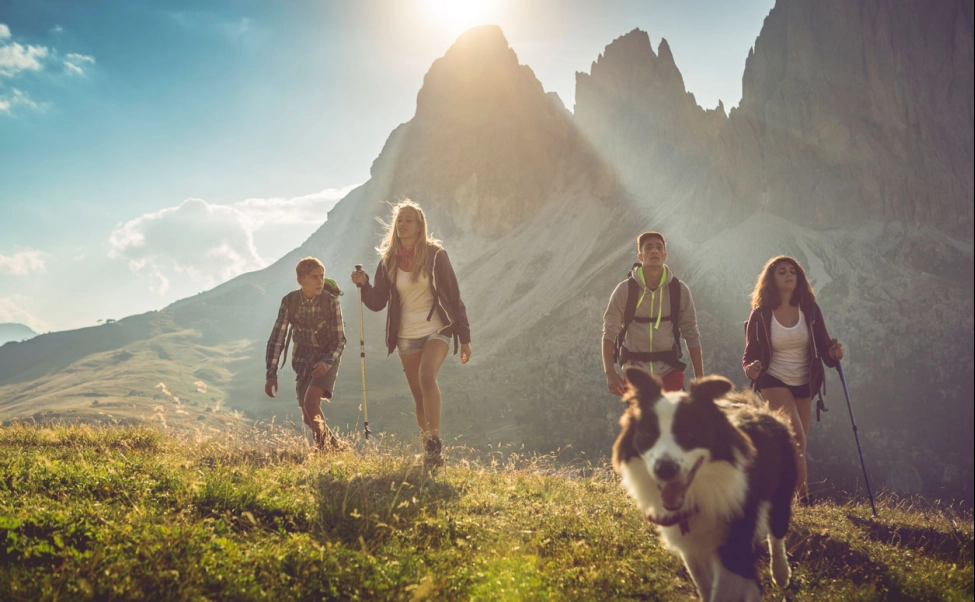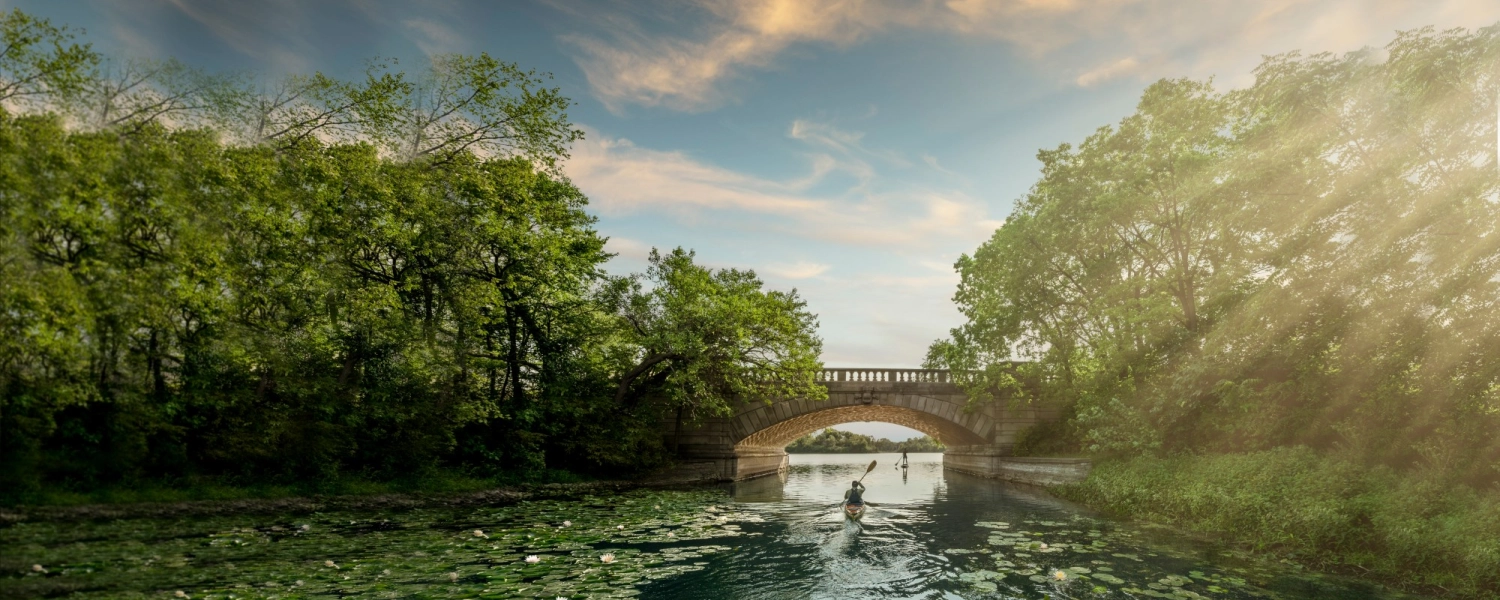- Details
- Written by: Sophie Nicholson
August: the great global traffic jam of travel. It’s when half of Europe goes on holiday, the mercury hits “crispy” in much of the Med, and flight prices do their best impression of a NASA rocket launch. You want sunshine, but not sunstroke. Buzz, but not beach-towel warfare. A bit of wilderness, but ideally with a cold beer and decent Wi-Fi at the end of it. We hear you....
Sure, a walking holiday in Switzerland might sound idyllic - but in August, the trails can be quite busy, and the mountain huts book up months in advance. And while we love a cycling holiday in Spain as much as the next adventure addict, tackling the climbs under a blazing 35°C sun isn’t exactly Type 1 fun.
"These are the sweet spots for active travellers who’d rather earn their views than stand in a queue for them"
That’s where this list comes in. We’ve handpicked eleven destinations that smash August out of the holiday park - aka destinations with stunning landscapes, active adventures, and the kind of summer weather that allows you to move without melting.
Whether it’s hiking in Iceland’s remote Westfjords, paddling through Finland’s quiet lake systems, or cycling Denmark’s coastlines, the places on this list are all about escaping crowds and beating the heat. And if you’re already planning ahead, our guide to the best places to travel in autumn is packed with ideas for when the leaves start to turn.
Until then, skip the airport scrum and the sweaty city queues this summer - these are the best destinations to travel in August - the sweet spots for active travellers who’d rather earn their views than stand in a queue for them.
The Dolomites, Italy
Temperature in August: 15–25°C, cooler at altitude
Travel time from the UK: Approx. 2 hrs flight + 2-3 hrs by car
Book a flight: EasyJet or British Airways to Venice; Ryanair to Verona or Innsbruck
Time difference: GMT +1
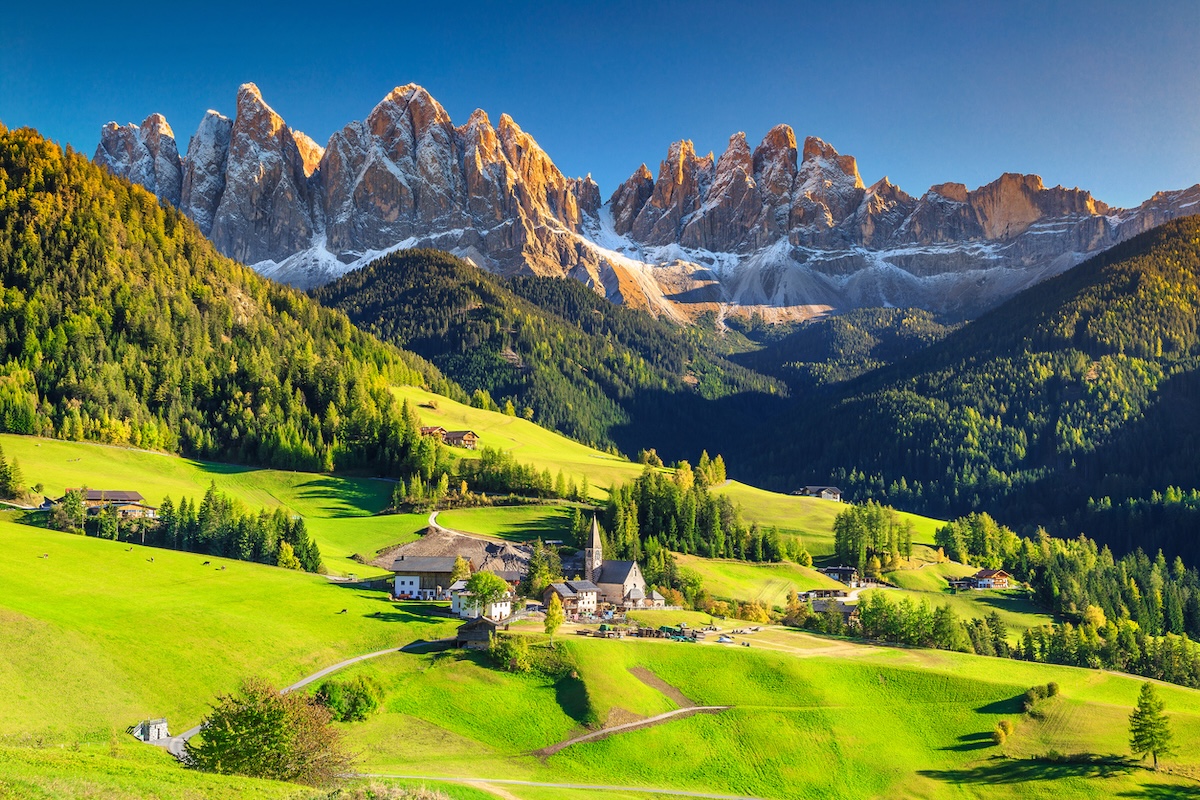
Why now?
The Dolomites have to be seen to be believed - an epic playground of limestone peaks, alpine meadows and pine forests straight out of a postcard. In August, the high trails are snow-free, wildflowers are still blooming, and days are long enough for big hikes and even bigger dinners.
It’s prime time for via ferrata, with old WWI military routes transformed into vertical adventure playzones, and high-altitude rifugi (mountain huts) offering warm strudel and super-friendly welcomes.
If you’re keen to dive deeper into the region, South Tyrol offers a particularly dreamy base - home to some of the best climbs, rides and trails in the Dolomites, all seasoned with a distinct Alpine-Italian flavour.
While August is an undeniably popular month to visit, quieter corners and lesser-trodden trails can still be sniffed out, especially if you’re up for earning your views.
Active highlight:
Take on the Alta Via 1, a legendary long-distance trail that threads its way across the heart of the Dolomites over 8–10 days. Expect dramatic ridgelines, scree-filled mountain passes, stunning sunsets, and super comfortable mountain huts serving beer and pasta at altitude. If you’re short on time, day-hike a section like the Cinque Torri loop or the jaw-dropping Tre Cime circuit.
Where to stay:
Check into Rifugio Lagazuoi, perched at 2,752m and reachable by cable car or under your own steam. It’s one of the highest mountain huts in the region, with panoramic views, hearty food, and front-row seats to the fiery alpenglow.
For a lower-altitude base, Hotel AMA Stay is situated in San Vigilio di Marebbe - a stunning traditional village that could well be the best kept secret in the Dolomites!
The Outer Hebrides, Scotland
Temperature in August: 12–18°C, with a side order of sea breeze
Travel time from the UK: Approx. 1.5 hrs flight from Glasgow or 3-4 hrs drive/ferry combo
Book a flight: Loganair from Glasgow, Inverness or Edinburgh to Stornoway or Barra
Time difference: GMT
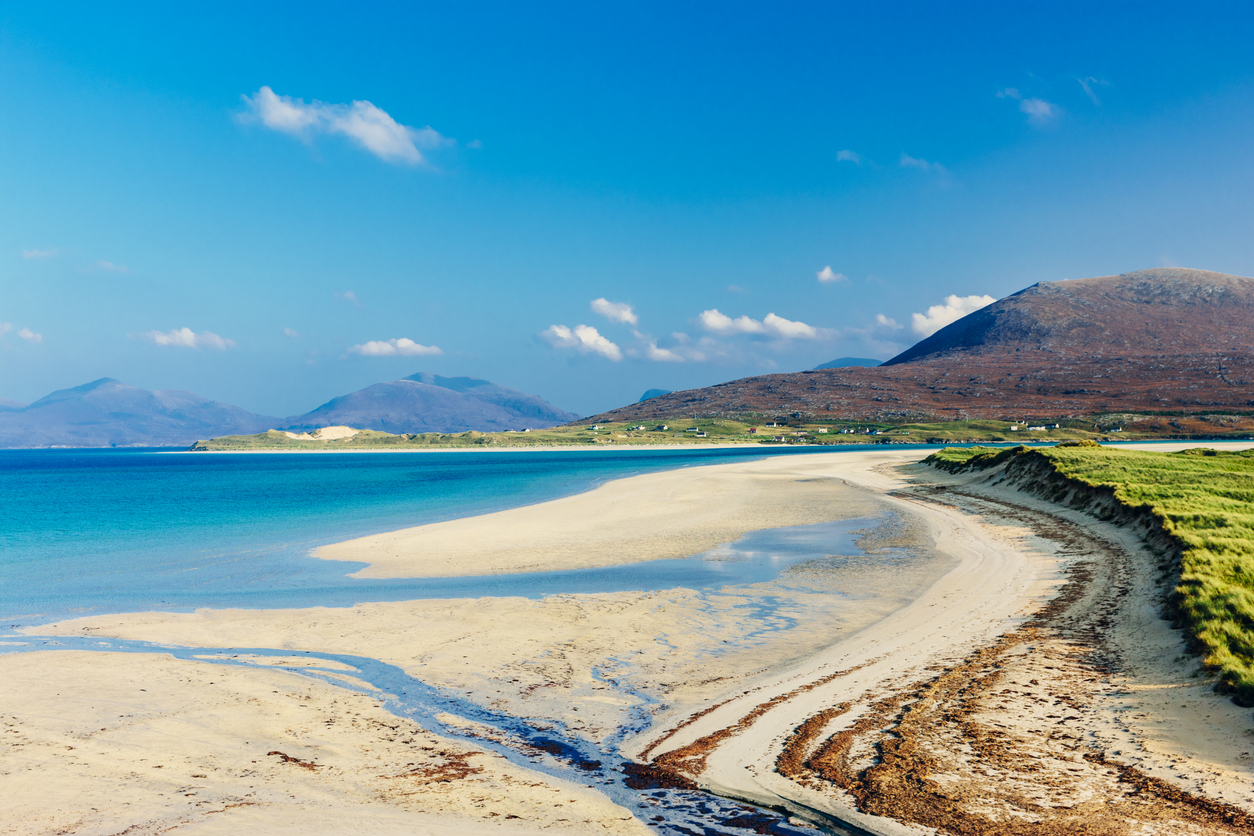
Why now?
August in the Hebrides is a sweet spot: long daylight hours and - on a good day - a kind of Celtic Caribbean magic.
This far-flung chain of Scottish isles stretches across the Atlantic in a windswept arc of white beaches, moorland, ancient ruins and big skies. Wildlife is abundant (think: sea eagles, seals, otters, and even basking sharks), and the sense of remoteness is inescapable. It’s also home to some of the best remote beaches in the UK, where powder-white sand meets turquoise sea, and the only footprints are likely to be your own.
With fewer crowds than the mainland Highlands, stunning scenery and a tangible sense of history, community and place, the Outer Hebrides remain one of the best destinations in the UK to truly lose (or find) yourself.
Active highlight:
The Outer Hebrides are home to one of the best long distance cycling routes in the world - the Hebridean Way. This 184-mile bikepacking route takes sees riders cross 10 islands linked by causeways and ferries, passing by standing stones, hairy highland cows, endless Atlantic ocean vistas and maybe the shower (or twenty) along the way.
It’s a proper end-of-the-world adventure, but one you can do with panniers and cake.
Where to stay:
Base yourself at Gearrannan Blackhouse Village on the Isle of Lewis, a restored crofting village with turf-roofed stone cottages right on the coast. It’s atmospheric, remote and brilliantly located for walks to the famous Callanish standing stones.
For a more off-grid experience, pitch up at Horgabost Campsite on Harris for barefoot beach vibes with a front-row seat for fiery Hebridean sunsets. A 15 minute drive will take you to the vivid turquoise waters and bright white sands of Luskentyre beach - widely considered to be one of the best remote beaches on the planet!
The Azores, Portugal
Temperature in August: 22-27°C
Travel time from the UK: Approx. 4 hrs direct flight
Book a flight: Ryanair or Azores Airlines from London Stansted or Gatwick to Ponta Delgada (São Miguel)
Time difference: GMT –1
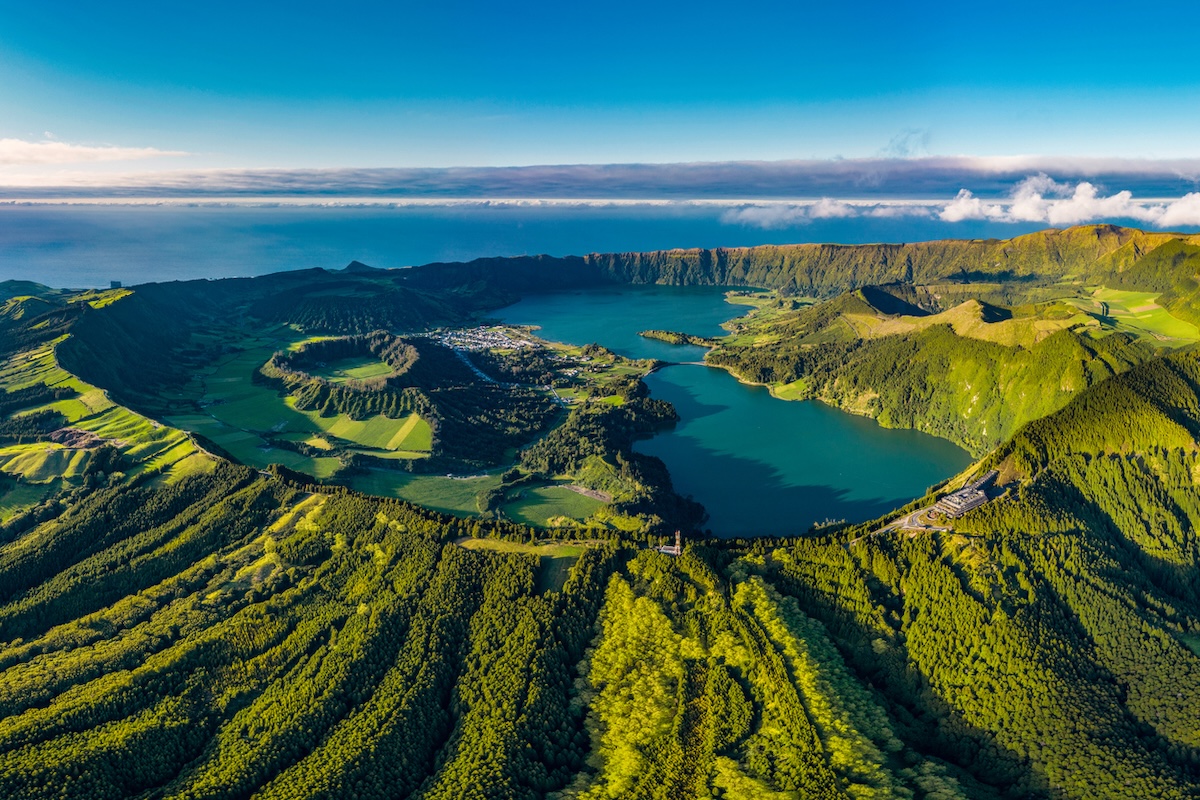
Why now?
This Atlantic archipelago is like Portugal’s wild younger cousin: lush, volcanic, and often cloaked in mist (and mystery). In August, the weather is at its sunniest and driest, making it ideal for exploring crater lakes, jungle-covered hills and black sand beaches.
São Miguel - the largest island - packs a little bit of everything: steaming fumaroles, hydrangea-lined roads, surf spots, and hot springs you can sink into after a big hike. It’s a dream for outdoor lovers who want something off the main tourist track. For a deeper dive into island-hopping, geothermal dips and crater-edge trails, check out our Azores adventure guide.
It’s basically Portugal, with a seriously unique twist…
Active highlight:
Hike the Sete Cidades caldera loop, a 12km trail with show-stopping views over twin volcanic lakes - one green, one blue - ringed by rim-top paths and cows with life-affirming, jaw-dropping views! It's easily one of the best hiking routes in the Azores.
Finish with a dip in the thermal waters of Ferraria, a natural seaside hot spring tucked into a lava cliff.
Where to stay:
Check into White Exclusive Suites & Villas, a 4-star chic, contemporary retreat on São Miguel’s south coast with panoramic Atlantic views and a sleek spa for post-hike recovery.
For something more adventurous, try Furnas Lake Forest Living, a rustic yet luxurious set of wooden cabins (and restaurant) situated in the island’s geothermal heartland and surrounded by trailheads and thermal pools.
Julian Alps, Slovenia
Temperature in August: 18-28°C in the valleys; cooler in the mountains
Travel time from the UK: Approx. 2 hrs 15 mins flight + 1.5 hr drive from Ljubljana
Book a flight: easyJet or Wizz Air to Ljubljana from London Gatwick or Luton
Time difference: GMT +1
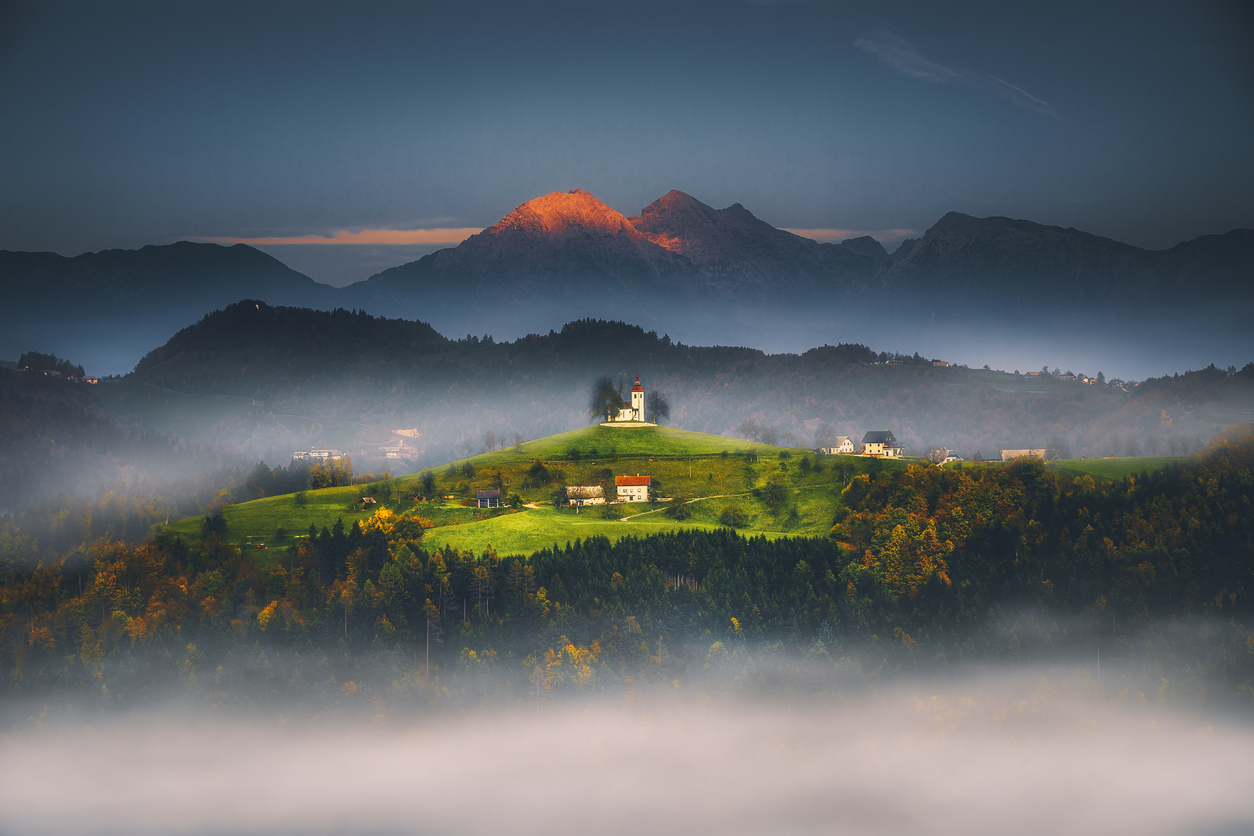
Why now?
August in the Julian Alps delivers the full alpine dream - yet crucially without the crowds associated with better-known alpine hotspots like Chamonix or Zermatt.
Slovenia’s compact size means you can start your day swimming in Lake Bohinj and end it scrambling on an airy ridge above Triglav National Park. Epic. Wildflower meadows are still in bloom, waterfalls are bursting with snowmelt, and it’s prime time for high-altitude hiking, climbing and wild camping.
There are icy rivers to leap into, via ferrata routes to tackle, and après-hike plates of dumplings and goulash that you'll never forget!
For a closer look at why Slovenia is known as the green playground of Europe, check out our full guide to the wild trails, crystal rivers and big-sky adventures you'll find in this stunning secret spot.
Active highlight:
Mount Triglav (2,864m) is the nation’s highest peak and a rite of passage for Slovenians. The classic two-day route includes via ferrata-style climbing and an overnight in a remote mountain hut, with epic sunrise views across the Julian Alps and into Italy and Austria.
You might not get a passport stamp at the top but you’ll definitely come home with a whole heap of bragging rights.
Where to stay:
Set up base in Bohinj ECO Hotel, a sustainable adventure hub near Lake Bohinj with hiking, biking and canyoning on the doorstep.
Prefer to go full fairy-tale? Stay at Hiša Raduha, a dreamy treehouse-meets-design-hotel in nearby Luče, with hot tubs under the stars and bikes for exploring the alpine valleys.
Lofoten Islands, Norway
Temperature in August: 12-18°C
Travel time from the UK: Approx. 2.5 hrs flight to Oslo + 2 hrs flight to Leknes or Evenes
Book a flight: Norwegian or SAS via Oslo to Leknes or Harstad/Narvik
Time difference: GMT +2
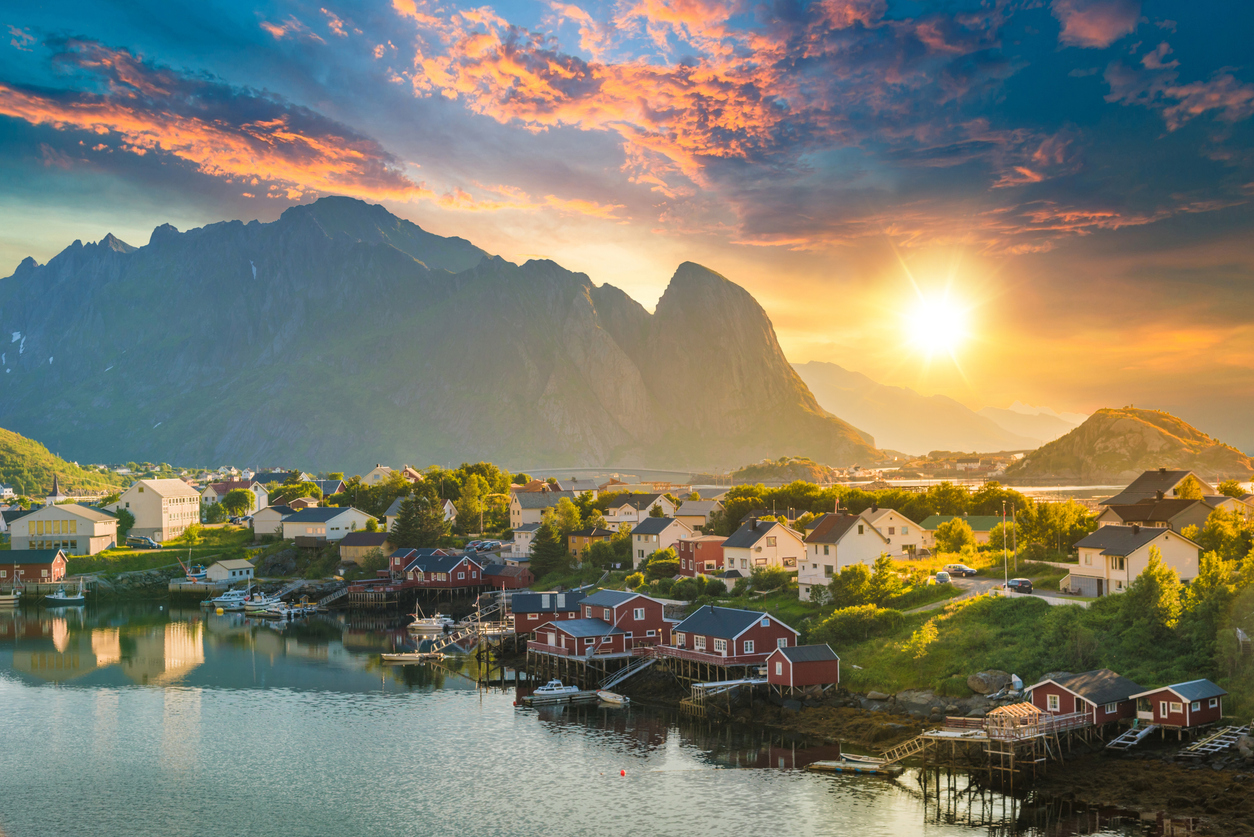
Why now?
August is one of the few months when Lofoten’s rugged remoteness feels downright inviting. The days are still long (think a golden hour that lasts for many hours), the sea’s just warm enough for hardy swimmers, and the coastal trails are at their most accessible.
Think Arctic beaches with Caribbean-blue water, red fishing cabins perched on stilts, and mountains that rise straight from the sea like Viking gods mid-yawn.
It’s wild, cinematic, and - when the mist lifts - utterly unforgettable.
And if you fall hard for Norway’s drama now, you might just find yourself coming back in winter, when it becomes one of the best places to see the Northern Lights in all of Europe.
Active highlight:
Hike the iconic Reinebringen trail, a short but steep climb to a ridgeline that’ll have you questioning your reality. The switchbacks are tough, the wind is fierce, and the views? Jaw-properly-on-the-fjord.
Looking for something a tad longer? Try the Moskenesøya traverse for remote ridges, wild camping and eagles for company.
Where to stay:
Book a rorbu (traditional fisherman’s cabin) at Eliassen Rorbuer in Hamnøy - perfectly located, ridiculously photogenic, and within walking distance of Reine’s trails and kayak launches.
For a more remote escape, try Hattvika Lodge in Ballstad, offering a blend of Nordic chic and proper gear-drying practicality after wet days in the wild.
French Pyrenees, France
Temperature in August: 18-28°C in valleys, cooler at altitude
Travel time from the UK: Approx. 1.5–2 hrs flight + 1–2 hr drive
Book a flight: Ryanair or easyJet to Lourdes or Toulouse
Time difference: GMT +1
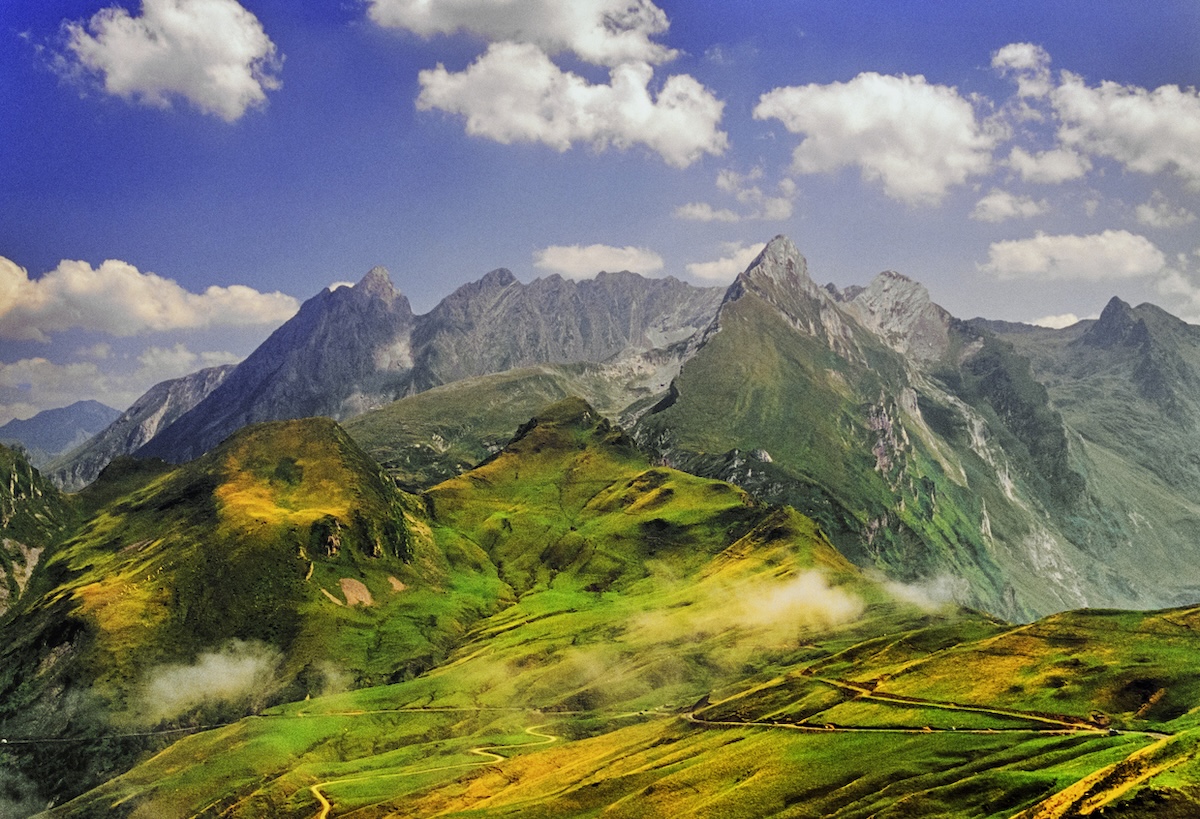
Why now?
August is when the French Pyrenees hit their stride - the high trails are mostly snow-free, and the marmots are still happily chirping away in the alpine meadows.
Unlike the more manicured Alps, the Pyrenees offer a wilder, more rugged feel, with far fewer hikers and an old-world charm that runs deep. If you're looking to explore more of the country on foot, check out our full guide to the best walking holidays in France - or if you're feeling mega adventurous, set your alpine sights on Vignemale (3,298m) - one of the highest mountains in France.
Add in medieval villages, Romanesque churches, and natural hot springs, and you’ve got the makings of a brilliant, crowd-dodging mountain escape.
Active highlight:
Explore the Cirque de Gavarnie - a jaw-dropping glacial amphitheatre with towering waterfalls and dramatic cliffs. It’s a relatively gentle day hike, or you can go full beast-mode by linking up to the high-altitude GR10 trail that spans the length of the range.
Wild camping is permitted in national parks, so hit the trail, pack light and sleep with the stars overhead.
Where to stay:
If you’re looking for rustic gite-style vibes then the Hotel du Cirque et de la Cascade is a great shout. Located near Gavarnie, it’s a traditional kinda place serving up hearty local food and tons of trailheads right from the door.
For a base with spa credentials, Hotel Mercure Peyragudes in Loudenvielle offers thermal baths and massage jets to soothe weary post-hike legs - plus access to bike trails, lakes and cable cars nearby.
Westfjords, Iceland
Temperature in August: 10-15°C
Travel time from the UK: Approx. 3 hrs flight to Reykjavik + 45 min flight or 5–6 hr drive
Book a flight: Icelandair to Reykjavik, then Air Iceland Connect to Ísafjörður
Time difference: GMT
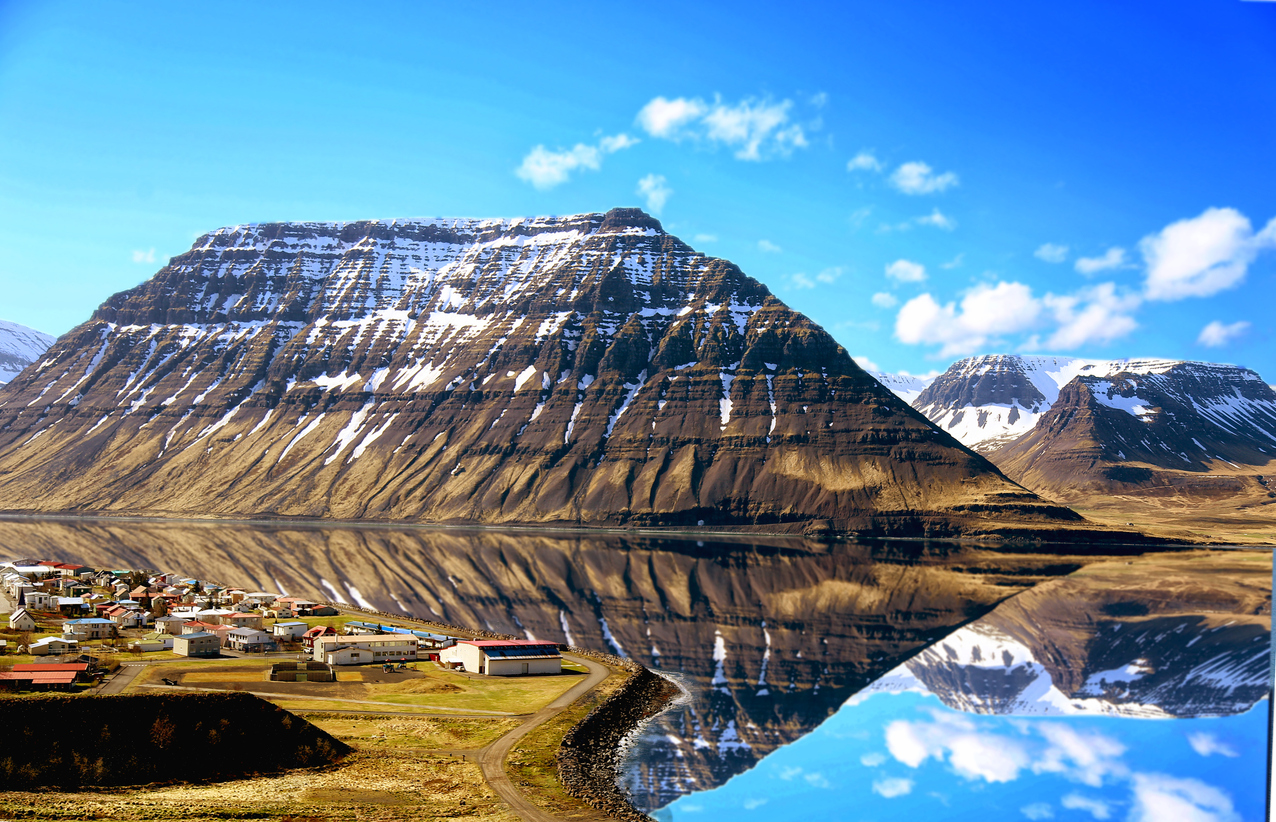
Why now?
August is the last real hurrah before the Westfjords start closing in for winter - roads are clear, daylight is lengthy, and the puffins haven’t yet packed their tiny suitcases for their annual migration.
This remote peninsula is Iceland at its rawest: thundering waterfalls, giant sea cliffs, volcanic valleys and geothermal pools so remote you might share them only with a sheep.
It’s not easy to get to though (and that’s the point). If you want wilderness without crowds, this is Iceland’s best-kept secret.
Active highlight:
Hike the Hornstrandir Nature Reserve, one of the most isolated corners of Europe. Accessible only by boat, it offers multi-day treks through jaw-dropping coastal terrain, with chances to spot Arctic foxes, whales, and seabird colonies that rival Attenborough documentaries.
Wild camping here is permitted - and quite frankly, often the only option.
Where to stay:
Stay in Ísafjörður at Hotel Horn, a cosy, family-run spot perfect for prepping gear and boat transfers.
For a proper wilderness lodge experience, look to Heydalur Guesthouse, where you can kayak on glacial rivers, bathe in hot springs, and go horse riding through mist-shrouded valleys.
Faroe Islands
Temperature in August: 10–13°C
Travel time from the UK: Approx. 2 hrs flight
Book a flight: Atlantic Airways direct from Edinburgh or via Copenhagen
Time difference: GMT
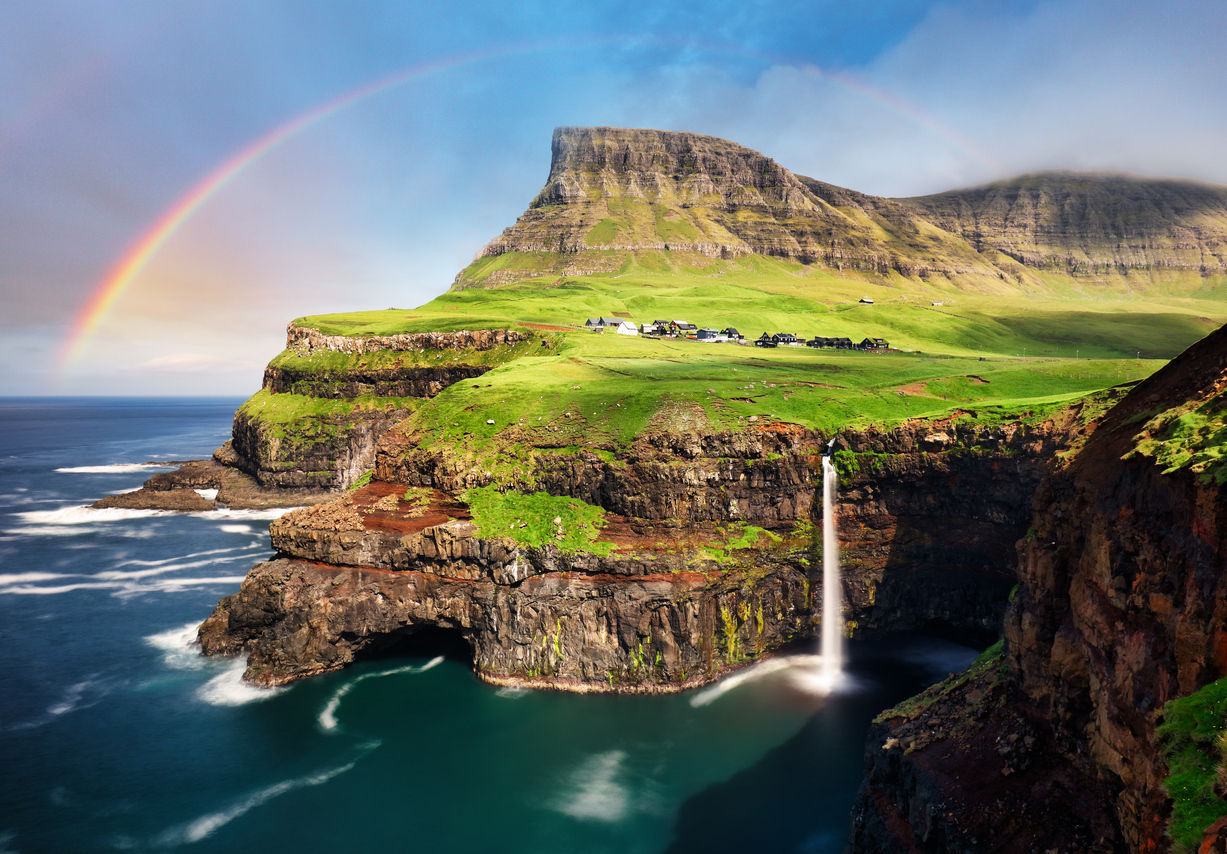
Why now?
August is as balmy as the Faroes get - still moody, yes, but the days are long, the grass is almost absurdly green, and the mist occasionally lifts to reveal jaw-dropping cliffs, tumbling waterfalls and turf-roofed houses that look like they belong in a Tolkien spin-off.
With festivals in full swing and ferries running to the farthest-flung islands, it’s the perfect time to explore this wild, wind-whipped archipelago without having to battle winter storms or cancelled crossings.
Also: puffins. Still here. Still adorable.
Active highlight:
Hike from Gásadalur to Bøur, a cliff-hugging trail that takes you past the iconic Múlafossur Waterfall, plunging straight into the ocean.
For a wilder mission, tackle Slættaratindur, the highest peak in the Faroes, with panoramic views that’ll make you believe in Norse gods.
Where to stay:
Base yourself in Tórshavn at Hotel Føroyar, a grass-roofed beauty perched above the city with knockout views and easy access to ferry ports.
For rural immersion, try Gjáargarður Guesthouse in the village of Gjógv—ideal for scenic hikes, sea views, and possibly a breakfast serenade by sheep.
Finland (Lakeland region)
Temperature in August: 15-25°C
Travel time from the UK: Approx. 3 hrs flight
Book a flight: Finnair or Norwegian direct to Helsinki, then 3-4 hrs by train/car to Lakeland
Time difference: GMT +3
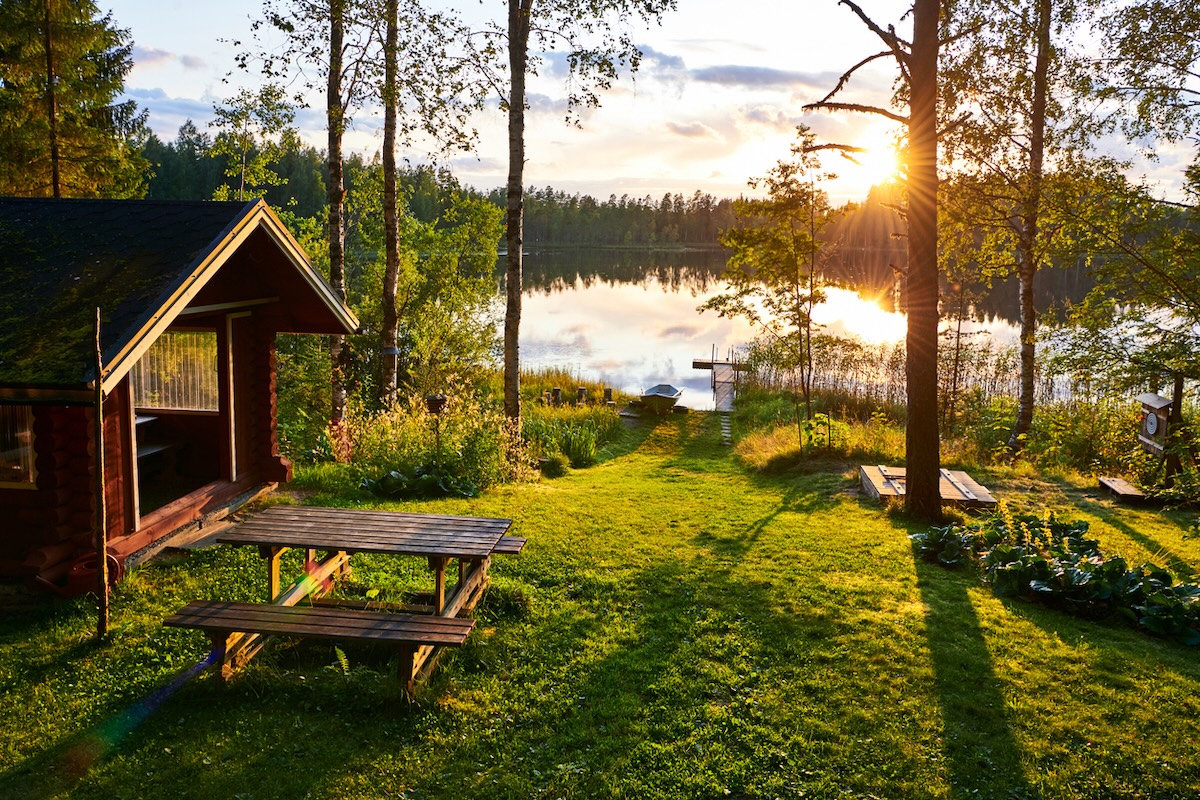
Why now?
August in Finland’s lake district is a blissful, pine-scented escape. The mosquitoes are retreating, the water’s still warm enough for a daily swim (if you’re brave), and the forests are ripe with bilberries and chanterelles.
This is slow adventure at its finest: think kayaking across mirror-like lakes, cycling gravel roads between smoke saunas, and wild camping beneath skies just starting to think about displaying the Northern Lights.
Oh, and there are more saunas than people. Probably.
Active highlight:
Paddle a section of the Saimaa Lake system, Europe’s largest lake network, where glassy channels thread between islands, quiet bays and forested headlands.
Wild camp on your own private island, listen to loons echo at night, and keep your eyes peeled for the elusive Saimaa ringed seal - one of the world’s rarest.
Where to stay:
Check in at Punkaharju Hotel, a former forest ranger school turned boutique hideaway set on a ridge between two lakes, surrounded by nature trails and water access.
Or go rustic and rent a traditional mokki (cabin) with its own sauna and swim spot - air-drying optional.
Denmark
Temperature in August: 18-23°C
Travel time from the UK: Approx. 1.5 hrs flight
Book a flight: Ryanair or British Airways to Copenhagen or Billund
Time difference: GMT +2
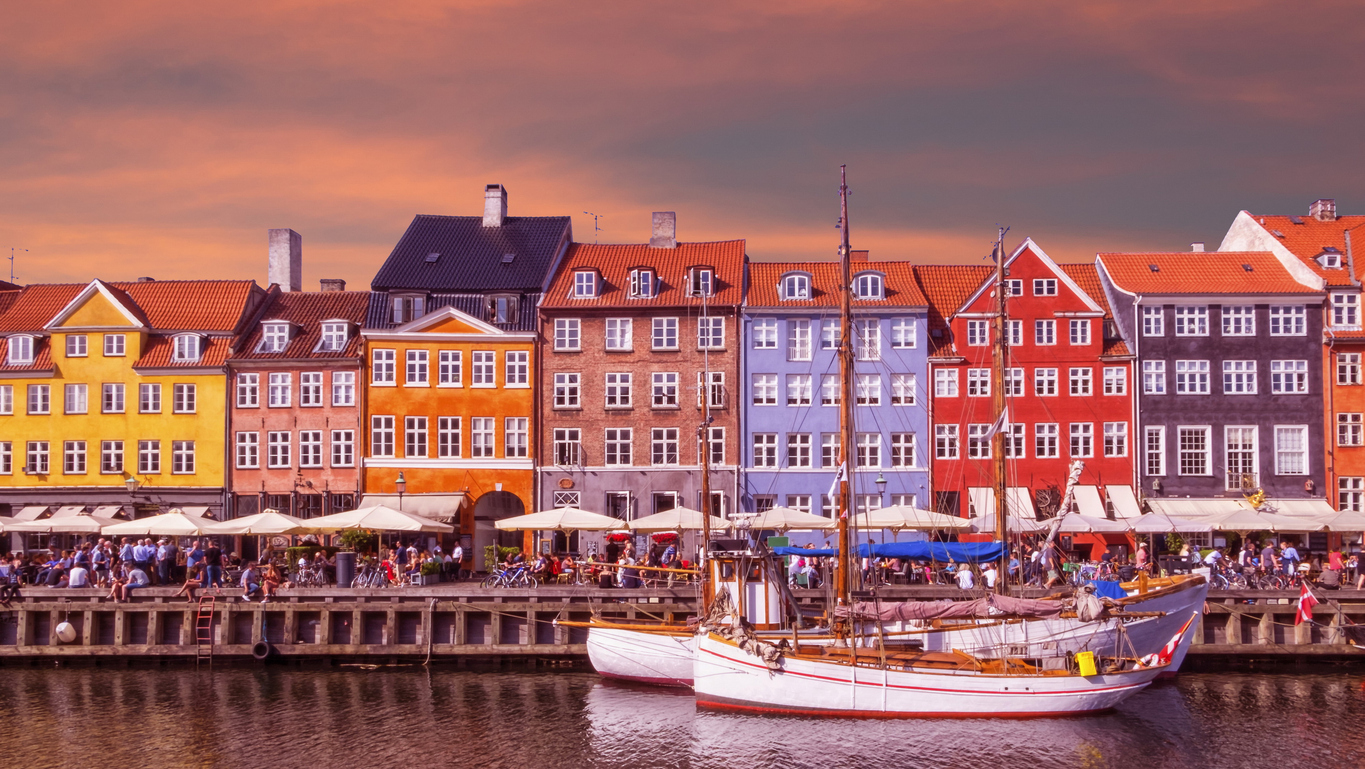
Why now?
August in Denmark is pure summer magic: warm enough to hit the beach and cycle all day without overheating, but cool enough to stay comfortable on endless outdoor adventures.
The country is a flat-out dream for active travellers - over 12,000 km of marked cycle routes, fun seaside towns, and a coast that swings from the North Sea to the Baltic with sandy beaches, hidden coves, and kite surfers galore.
Bonus: Danish hygge isn’t just a concept; it’s a lifestyle, and it tastes best with freshly caught fish and a craft beer after a day on the road. Plus, pastries.....
Active highlight:
Take the Berlin-Copenhagen Cycle Route (part of EuroVelo 7) or explore the Marguerite Route, Denmark’s national cycle path winding 400 miles through forests, past castles, and along coastlines.
Day trips from Copenhagen to places like Amager Beach Park or Møns Klint cliffs offer epic hiking, birdwatching and wild swimming.
Where to stay:
Stay at Hotel Sanders in Copenhagen, a boutique spot with a luxe vibe and cycling-friendly facilities.
For a coastal retreat, Røsnæs Hotel offers charming rooms just steps from hiking trails and quiet beaches - plus bikes for rent, obvs.
Cantabria, Spain
Temperature in August: 20-30°C
Travel time from the UK: Approx. 2 hrs flight + 1 hr drive from Bilbao Airport
Book a flight: easyJet or Ryanair to Bilbao or Santander
Time difference: GMT +2
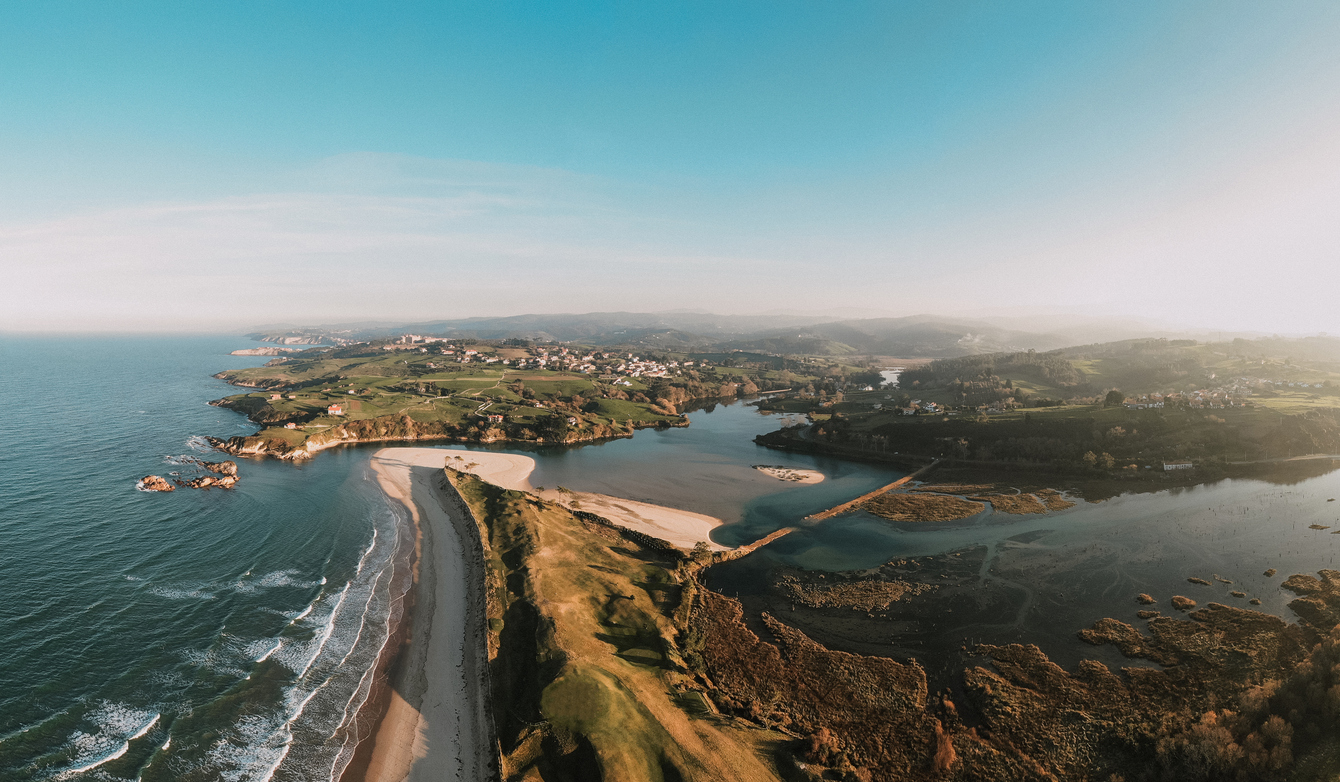
Why now?
August in Cantabria is like the perfect tapas plate - varied, vibrant, and a little bit addictive. Nestled on Spain’s northern coast, it’s where the lush green mountains meet the crashing Atlantic, and the hiking trails wind through ancient forests, along dramatic cliffs, and into hidden prehistoric caves like Altamira.
Unlike the busier Mediterranean coasts, Cantabria stays refreshingly authentic and uncrowded.
Plus, the food scene is a delicious bonus: fresh seafood, hearty stews, and the kind of pintxos that make you forget about siestas altogether.
Active highlight:
Explore the Picos de Europa National Park - a rugged mountain playground with everything from adrenaline-pumping via ferrata routes to scenic valley hikes and wild river canyoning. It’s one of Spain’s best-kept secrets for summer adventures, and a highlight in our roundup of the 10 best walking holidays in Europe.
Don’t miss the coastal Camino del Norte section, a stunning seaside hike with sweeping views, wildflowers, and sleepy fishing villages.
Where to stay:
Stay at a cosy mountain cabin like the secluded Invernal de Tobaño, nestled within the Picos de Europa and offering jaw-dropping views over rugged peaks and valleys. With a fully equipped kitchen, warm fireplace, and peaceful outdoor dining area, it’s perfect for unwinding after a day on the trails—and the hosts are known for their genuinely welcoming hospitality.
For coastal vibes, the 5-star Hotel Casa del Marques in Santillana del Mar offers uber-stylish comfort steps from cobbled streets and Cantabria’s culinary delights.
Whether you’re after alpine adventures, coastal calm or volcanic thrills, these destinations prove you can find space to roam - even in peak holiday months! From mountain huts to island trails, each place on this list offers something a little cooler, quieter and more connected to nature.
We’ll be back soon with more seasonal travel ideas, so stay tuned for more inspiration on where to go, when the world seems to be going everywhere.
August doesn’t have to mean compromise - it can actually be the best month of the year to explore, if you know where to look.....

